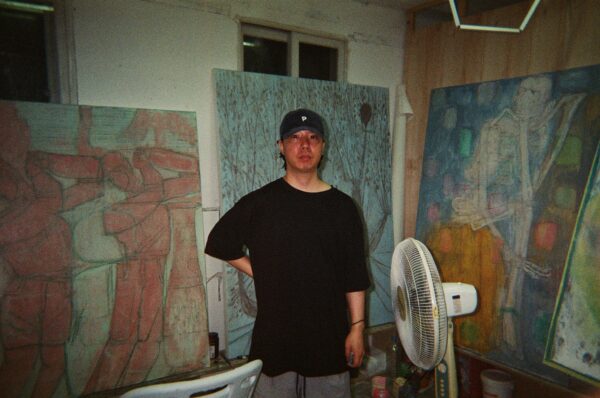Artemin Gallery | First Time Exhibitor
| [INTERVIEW] Artemin Gallery
Artemin Gallery
1. 이번 Kiaf SEOUL 2025에서 소개하시는 작품 중 특히 강조하고 싶은 아티스트나 작품이 있다면 소개 부탁드립니다.
이번 Kiaf에서 대만의 회화 작가 Cheng Nung-Hsuan을 집중 조명하게 되어 매우 기대하고 있습니다. 그의 최근 작품은 서양의 고전적 구도와 동양적 선의 유려함이 조화를 이루는 인상적인 융합으로, 회화의 현재성과 가능성에 대한 철학적 질문을 제기합니다. 청의 캔버스 위에는 기하학과 인물, 추상과 서사가 동시다발적으로 펼쳐지며, 마치 연극 무대를 연상시키는 역동적인 긴장감이 담겨 있습니다.
이번 신작 시리즈에서 청은 모호함과 변형성을 적극적으로 수용하며, 치밀한 계획보다는 직관적인 레이어링을 통해 화면을 구축해 나갑니다. 형체는 나타났다 사라지고, 색면은 충돌하면서도 조화를 이루며, 캔버스는 시각적 긴장감을 품은 생생한 공간으로 재탄생합니다. 그의 작업은 아르테민 갤러리가 지향하는 회화의 역사적 맥락과의 깊이 있는 대화, 그리고 형식적 경계를 넘나드는 실험성과도 잘 맞닿아 있습니다.

Nung-Hsuan Cheng, Waving the Flag no.2, Oil on canvas, 162 x 130 cm, 2024

Nung-Hsuan Cheng, Turning Crease no.3, Oil on canvas, 91 x 72.5 cm, 2024
2. 귀 갤러리를 이끄는 방향성이나 철학에 대해 간단히 소개해 주실 수 있을까요?
Artemin Gallery는 추상과 구상 사이의 교차점을 탐구하며, 현대 작가들이 전통 회화의 맥락을 어떻게 재해석하고 시각 언어의 확장과 변화 속에서 자신만의 표현을 찾아가는지를 집중적으로 조명합니다. 우리는 특히 재료에 대한 감각, 형식적 실험, 그리고 내면의 고요한 강렬함을 품은 작업들에 깊은 매력을 느낍니다.
타이베이에 기반을 두고 국제적 협업을 지속해온 갤러리로서, 저희는 동서양 시각 문화가 각 작가의 실천 속에서 어떻게 충돌하거나 공명하는지, 그 교차점에도 관심을 갖고 있습니다. 좋은 예술은 명료함과 모호함의 균형 속에 존재하며, 관람객에게 머무르고, 느끼고, 사유할 수 있는 시간을 제공해야 한다고 믿습니다.
3. 올해 Kiaf에 처음 참가하시면서 기대하시는 점이나 얻고자 하는 경험이 있다면 무엇인가요?
이번이 Kiaf 첫 참가인 만큼, 더 넓은 네트워크의 컬렉터, 큐레이터, 재단 및 기관들과의 만남을 고대하고 있습니다. 한국은 오랫동안 아시아 현대미술의 중요한 참조점이 되어왔으며, 저희는 이번 참여를 통해 한국 미술 생태계와 더 깊은 접점을 만들 수 있기를 희망합니다.
Kiaf는 저희 작가들을 새로운 관객에게 소개하는 기회를 넘어, 한국 미술 시장의 흐름과 감각, 구조를 보다 깊이 이해할 수 있는 소중한 기회라고 생각합니다. 페어를 넘어 장기적인 관계 구축과 협업의 가능성을 함께 발견해 나가고자 합니다.











